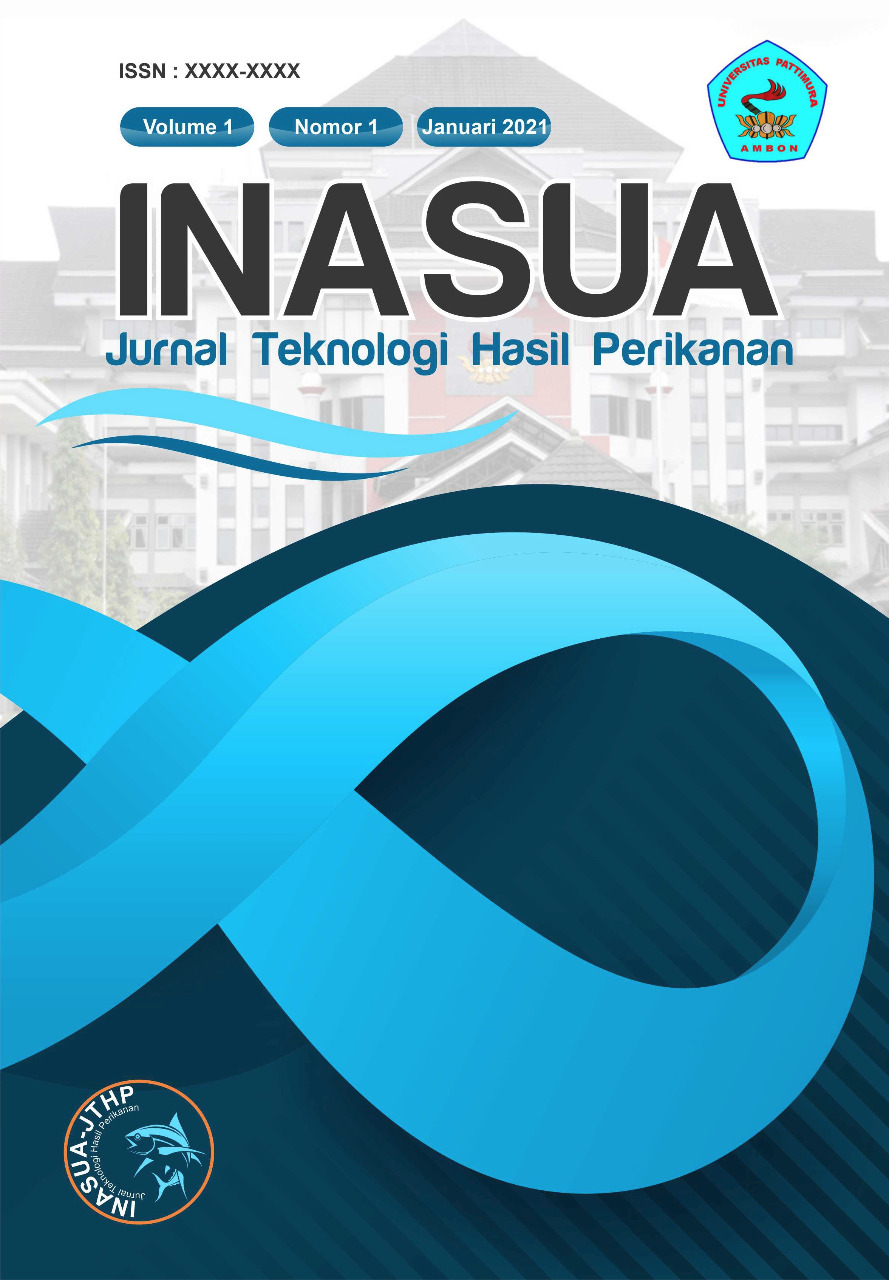UMUR SIMPAN ABON IKAN LAYANG (Decapterus sp.) BERDASARKAN PENDEKATAN MODEL ARRHENIUS
SHELF LIFE OF SCADFISH (Decapterus sp.) FLOSS BASE ON THE ARRHENIUS MODEL APPROACH
Abstract
Abon ikan merupakan produk olahan ikan siap santap dengan penambahan bumbu dan rempah, berupa hancuran daging ikan yang kering dengan citarasa yang lezat. Dalam penyimpanannya produk tersebut akan mengalami kemunduran mutu hingga mencapai kondisi tidak layak untuk dikonsumsi, Studi prediksi umur simpan penting dalam produksi produk pangan, sebagai usaha untuk menyediakan informasi umur simpan yang dapat diterapkan pada produk pangan. Salah satu reaksi kerusakan yang banyak menyebabkan penurunan mutu produk pangan setelah produksi adalah reaksi oksidasi lemak yang menyebabkan terbentuknya komponen volatil dan bertanggung jawab terhadap timbulnya ketengikan. Angka peroksida penting untuk menentukan derajat kerusakan ketengikan produk pangan akibat oksidasi. Pendugaan umur simpan model pendekatan Arrhenius, mensimulasikan percepatan kerusakan produk pada berbagai kondisi penyimpanan suhu yang lebih tinggi di atas suhu penyimpanan normal. Penentuan umur simpan abon ikan layang menggunakan model Arrhenius diperoleh hasil perhitungan umur simpan abon ikan layang pada suhu penyimpanan30oCadalah61hari.
Downloads
References
Sudarmadji, S. 2003. Mikrobiologi Pangan. Yogyakarta: PAU Pangan dan Gizi UGM.
Herawati, H. 2008. Penentuan Umur Simpan pada Produk Pangan. Jurnal Litbang Pertanian, 27(4): 124-130.
Koswara, S. Dan F.K. 2004. Pendugaan Masa Kadaluarsa Produk-Produk Spesifik. Bogor.
Robertson, Gordon. L. 1993. Food Packaging: Princip lesand Practice. Marcel Dekker, Inc.,NewYork.
Arpah dan Syarief. 2000. Evaluasi Model-model Pendugaan Umur Simpan Pangan dari Difusi Hukum Fick Undireksional. Buletin Teknologi dan Industri Pangan, pp. 11:1–11.
Buckle, K.A., R.A. Edward., G.H. Fleet dan M. Wootton. 1987. Ilmu Pangan. Terjemahan: H.P urnomo dan Adiono. Universitas Indonesia Press, Jakarta.
Ketaren, S. 2005. Minyak dan Lemak Pangan. Jakarta: UI Press.
Singh, R.P. 1994. Scientific Princip lesof Shelf Life Evaluation. Didalam Man C.M.D. and A.A.Jones (eds.). Shelf Life Evaluation of Foods. Blackie Academicand Professional, London. 40-51.
Kusnandar, F. 2006. Modifikasi Pati dan Aplikasinya dalam Industri Pangan. Food Review Indonesia.
Rohman, A. 2013. Analisis Komponen Makanan. Graha Ilmu. Jakarta.
Raharjo, S. 2004. Oksidasi Lemak pada Makanan: Implikasinya pada Mutu Makanan dan Kesehatan. Universitas Gadjah Mada, Yogyakarta.
Winarno, F.G. 2010. Kimia Pangan dan Gizi. PT. Gramedia. Jakarta.
Oxtoby, D.W., H.P.Gillis, dan N.D. Nachtrieb. 2001. Prinsip prinsip Kimia Modern. Erlangga. Jakarta.
Estiasih,T., W.D.R. Putri, dan E. Widyastuti. 2015. Komponen Minor dan Bahan Tambahan Pangan. Bumi Aksara.Jakarta.
Ketaren, S. 2008. Minyak dan Lemak Pangan. Universitas Indonesia. Jakarta.
Wasono, M.S.E. dan S.S. Yuwono. 2014. Pendugaan Umur Simpan Tepung Pisang Goreng Menggunakan Metode Accelerated Shelf Life Testing Dengan Pendekatan Arrhenius. Jurnal Pangan dan Agroindustri. 2(4): 178-187.
Copyright (c) 2023 to Authors

This work is licensed under a Creative Commons Attribution-ShareAlike 4.0 International License.







